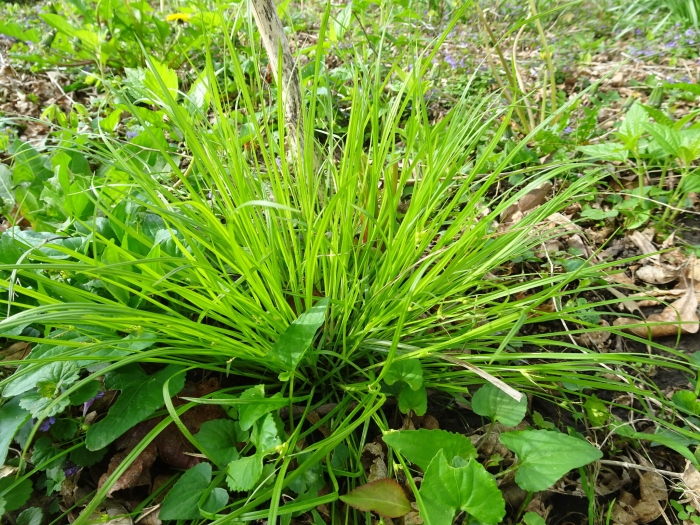James’s Sedge
(Carex jamesii)
James’s Sedge (Carex jamesii)
/
/

© Thomas Koffel
CC BY 4.0
Image By:
© Thomas Koffel
Recorded By:
Copyright:
CC BY 4.0
Copyright Notice:
Photo by: © Thomas Koffel | License Type: CC BY 4.0 | License URL: http://creativecommons.org/licenses/by/4.0/ | Uploader: tkoffel | Publisher: iNaturalist |

























Estimated Native Range
Summary
Carex jamesii, commonly known as James’s sedge, is a perennial herbaceous plant native to mesic hardwood forests, particularly those with rich, moist soils in North America, ranging from Minnesota to New York and south to Oklahoma and South Carolina. It typically forms dense clumps and reaches heights of 12 to 18 inches (30 to 45 centimeters). James’s sedge has a grass-like appearance with narrow, arching leaves and inconspicuous greenish flowers that are followed by small, brown fruits from early May to mid-July. The fruits are subtended by two to four perigynia, which are enclosed by leaf-like pistillate scales, and seeds are dispersed by ants, a process known as myrmecochory.
James’s sedge is valued for its ability to thrive in shaded garden areas where grass might struggle, making it an excellent ground cover for woodland gardens and shaded borders. It is also used in restoration projects due to its native status and the role it plays in supporting local ecosystems. Carex jamesii prefers consistently moist soil and partial to full shade, making it suitable for planting near water features or in areas with naturalized settings. While generally low-maintenance, it can be susceptible to leaf spot diseases in overly wet conditions.CC BY-SA 4.0
James’s sedge is valued for its ability to thrive in shaded garden areas where grass might struggle, making it an excellent ground cover for woodland gardens and shaded borders. It is also used in restoration projects due to its native status and the role it plays in supporting local ecosystems. Carex jamesii prefers consistently moist soil and partial to full shade, making it suitable for planting near water features or in areas with naturalized settings. While generally low-maintenance, it can be susceptible to leaf spot diseases in overly wet conditions.CC BY-SA 4.0
Plant Description
- Plant Type: Grass
- Height: 1-2 feet
- Width: 1-1 feet
- Growth Rate: Moderate
- Flower Color: N/A
- Flowering Season: Spring, Summer
- Leaf Retention: Semi-deciduous
Growth Requirements
- Sun: Part Shade
- Water: Medium
- Drainage: Medium, Slow
Common Uses
Bank Stabilization, Border Plant, Low Maintenance
Natural Habitat
Native to mesic hardwood forests with rich, moist soils in North America
Other Names
Common Names: Grass Sedge
Scientific Names: , Carex jamesii, Carex austromontana, Carex disperma, Carex jacintoensis, Carex jamesii var. austromontana, Carex steudelii, Danthonia steudelii, Dapedostachys steudelii,
GBIF Accepted Name: